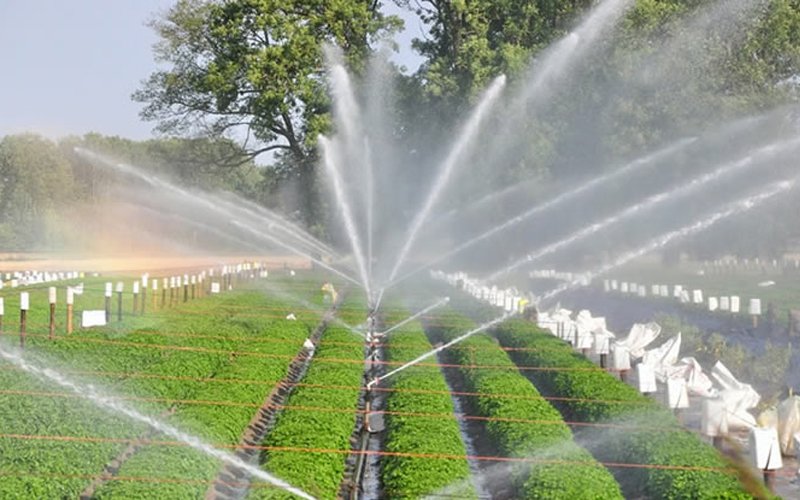
Here are the main irrigation methods used in different countries around the world:
1. Flood Irrigation: This method involves flooding the fields with water, allowing it to flow and cover the entire field. It is commonly used in countries like the United States, China, India, and Egypt.
2. Furrow Irrigation: Furrow irrigation involves creating small channels or furrows between crop rows and allowing water to flow through them. It is commonly used in countries like the United States, China, and India.
3. Sprinkler Irrigation: Sprinkler systems distribute water over the fields in the form of sprays or sprinkles. It is used in many countries worldwide, including the United States, China, India, Australia, and the Netherlands.
4. Drip Irrigation: Drip irrigation provides water directly to the plant roots through a network of pipes and emitters. This method is highly efficient in water usage and is employed in countries like the United States, China, India, Israel, and Australia.

5. Center Pivot Irrigation: Center pivot irrigation involves rotating sprinklers around a central pivot point, covering a circular area. It is commonly used in countries like the United States and Australia.
6. Subsurface Irrigation: Subsurface irrigation delivers water below the soil surface, either through buried pipes or specialized irrigation tapes. It is used in various countries, including Australia.
7. Terraced Irrigation: Terraced irrigation involves creating leveled fields on sloping terrains to conserve water and prevent soil erosion. It is commonly practiced in countries like China and India.
8. Paddy Field Irrigation: Paddy field irrigation is specific to rice cultivation, where fields are flooded with water and rice is grown in submerged conditions. It is practiced in countries such as China and India.
9. Sprinkler Irrigation in Greenhouses: Many countries, including the Netherlands, utilize advanced sprinkler irrigation techniques in greenhouse cultivation to provide water to plants in a controlled environment.
It's important to note that countries often employ a combination of these methods based on factors such as available water resources, climate, crop type, and technological advancements. The choice of irrigation method is influenced by a country's specific needs and resources.